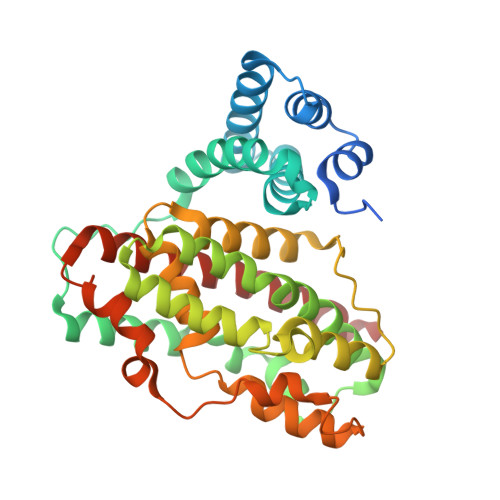Structural Basis for Methine Excision by a Heme Oxygenase-like Enzyme.
Simke, W.C., Walker, M.E., Calderone, L.A., Putz, A.T., Patteson, J.B., Vitro, C.N., Zizola, C.F., Redinbo, M.R., Pandelia, M.E., Grove, T.L., Li, B.(2024) ACS Cent Sci 10: 1524-1536
- PubMed: 39220707
- DOI: https://doi.org/10.1021/acscentsci.4c00015
- Primary Citation of Related Structures:
8W1Q, 9B9M, 9B9N, 9B9O - PubMed Abstract:
Heme oxygenase-like domain-containing oxidases (HDOs) are a rapidly expanding enzyme family that typically use dinuclear metal cofactors instead of heme. FlcD, an HDO from the opportunistic pathogen Pseudomonas aeruginosa , catalyzes the excision of an oxime carbon in the biosynthesis of the copper-containing antibiotic fluopsin C. We show that FlcD is a dioxygenase that catalyzes a four-electron oxidation. Crystal structures of FlcD reveal a mononuclear iron in the active site, which is coordinated by two histidines, one glutamate, and the oxime of the substrate. Enzyme activity, Mössbauer spectroscopy, and electron paramagnetic resonance spectroscopy analyses support the usage of a mononuclear iron cofactor. This cofactor resembles that of mononuclear non-heme iron-dependent enzymes and breaks the paradigm of dinuclear HDO cofactors. This study begins to illuminate the catalytic mechanism of methine excision and indicates convergent evolution of different lineages of mononuclear iron-dependent enzymes.
- Department of Chemistry, The University of North Carolina at Chapel Hill, Chapel Hill, North Carolina 27599, United States.
Organizational Affiliation:

















